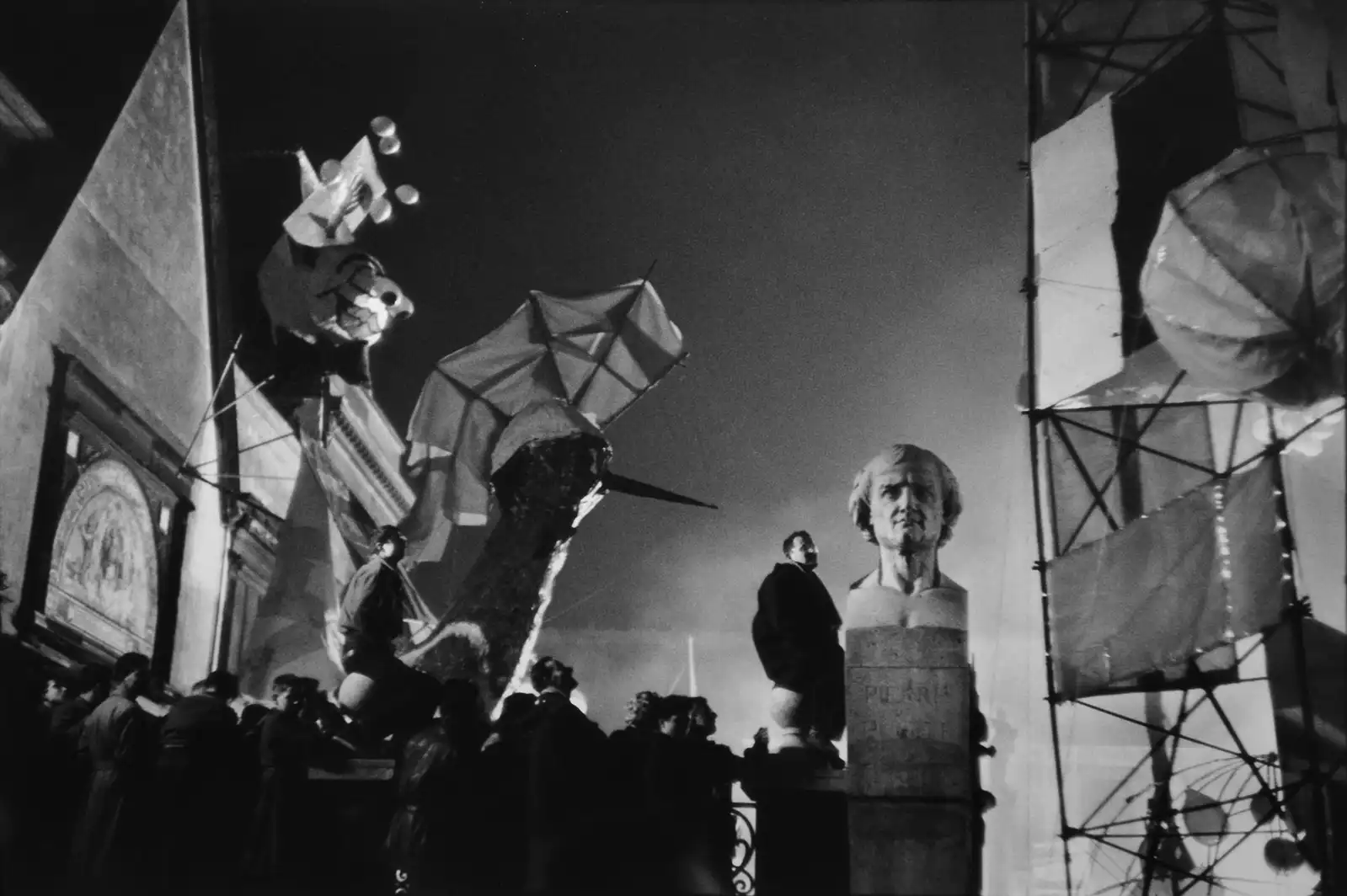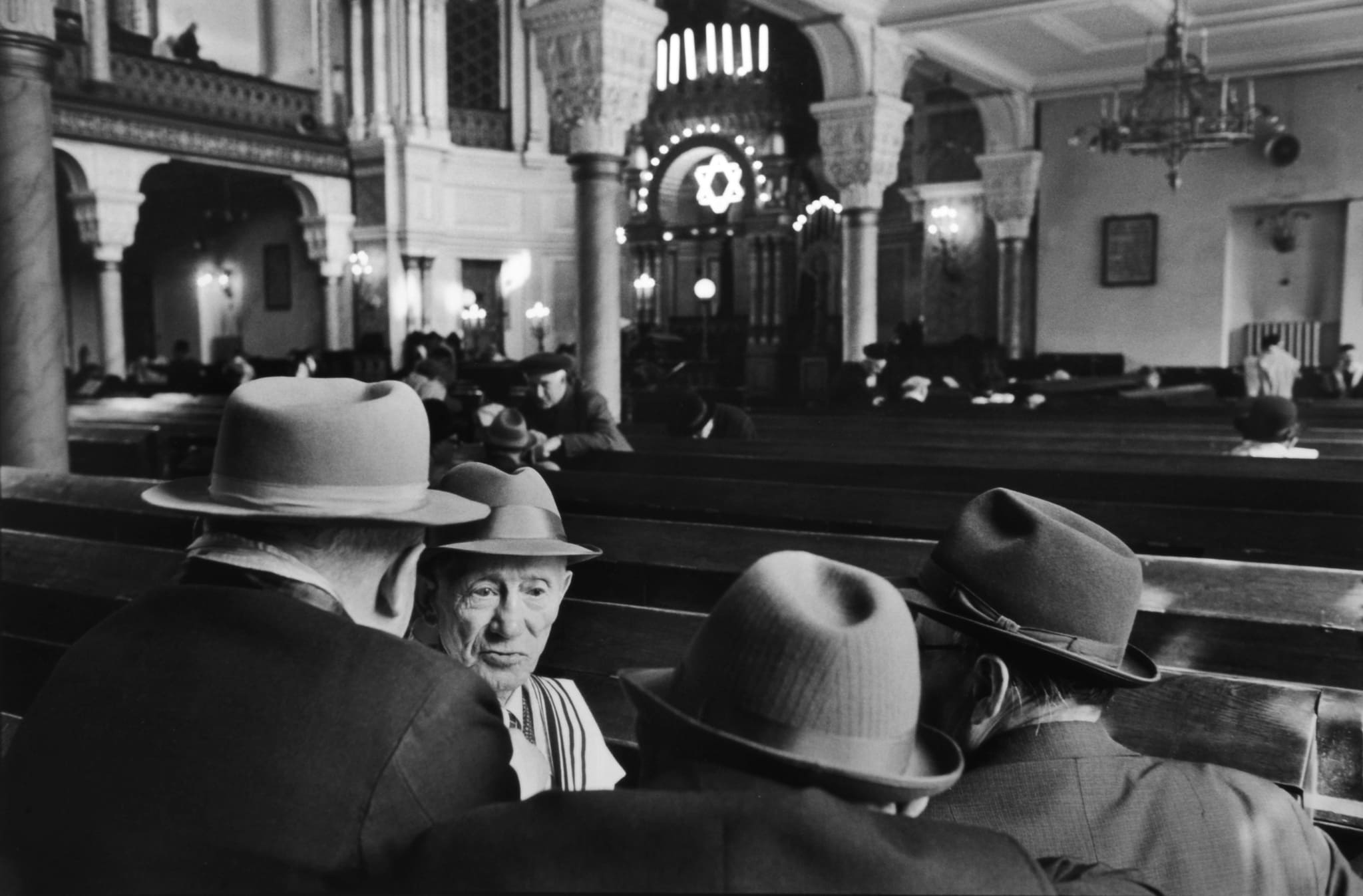Henri Cartier-BressonDistrict of Menilmontant, 20th Arrondissement, Paris, 1969
£14,500
Signed and stamped with photographer’s blind stamp
Silver gelatin print, printed 1980s
11 × 14 inches

Signed and stamped with photographer’s blind stamp
Silver gelatin print, printed 1980s
11 × 14 inches
This artwork is a silver gelatin print, printed in the 1980s. Signed and stamped with photographer’s blind stamp on reverse.
Framing
For this picture, we recommend book-mounting the print in a wide passepartout and framing in a black wooden box. It is widely accepted as the most traditional way to frame photography—especially rare or vintage works—giving visual priority to the image and yet fitting stylishly into most interiors. Other options are of course available. All our frames are handmade by one of the UK's leading framing workshops, and are constructed to museum standards. Please note that prices do not include local taxes, framing or shipping.
Shipping
We aim to ship works that are unframed within 4 weeks and within 10 weeks for works that are framed, although sometimes we will beat that! All works are shipped from the UK. Please note that prices listed above do not include framing or shipping.
Artwork In Detail
Henri Cartier-Bresson is perhaps the most significant photographer of the twentieth-century. Striving for a perfect balance of content and formal composition in all his work, Cartier-Bresson brought a new aesthetic and practice to photography, initiated modern photojournalism, and influenced countless followers. His photographs may be summed up through a phrase of his own: “the decisive moment,” the magical instant when the world falls into apparent order and meaning, and may be apprehended by a gifted photographer.


Henri Cartier-Bresson
District of Menilmontant, 20th Arrondissement, Paris, 1969
EnquireHenri Cartier-Bresson
France
B. 1908
EnquireCartier-Bresson (1908 – 2004) was born in Chanteloup, and studied literature at Cambridge University in 1928-29. He began photographing in 1931 and purchased a Leica in 1933. He joined an ethnographic expedition to Mexico the next year, and in 1935 studied cinematography with Paul Strand. He assisted Jean Renoir in 1936 and 1939, and made his own documentary, Return to Life, in 1937. He was drafted into the film and photo unit of the French army in 1940 and was taken prisoner by the Germans that same year. After three years of imprisonment he escaped and began working for the French underground. In 1943 he made a series of portraits of artists, including Matisse, Bonnard, and Braque. Through 1944 and 1945, Cartier-Bresson photographed the occupation of France and its liberation. In 1947 he co-founded the Magnum agency with Robert Capa, Chim (David Seymour), and George Rodger and he spent the next twenty years traveling around the world. He received the Overseas Press Club Award four times; the American Society of Magazine Photographers award in 1953; and the Prix de la Société Française de Photographie in 1959, among other honors. In 1966 he left Magnum, which remained his agent, and devoted himself to drawing. Cartier-Bresson’s extensive publications include From One China to Another (1954), The Europeans and People of Moscow (1955), The Face of Asia (1972), and The Decisive Moment (1973).
More from Henri Cartier-Bresson
Related Works



